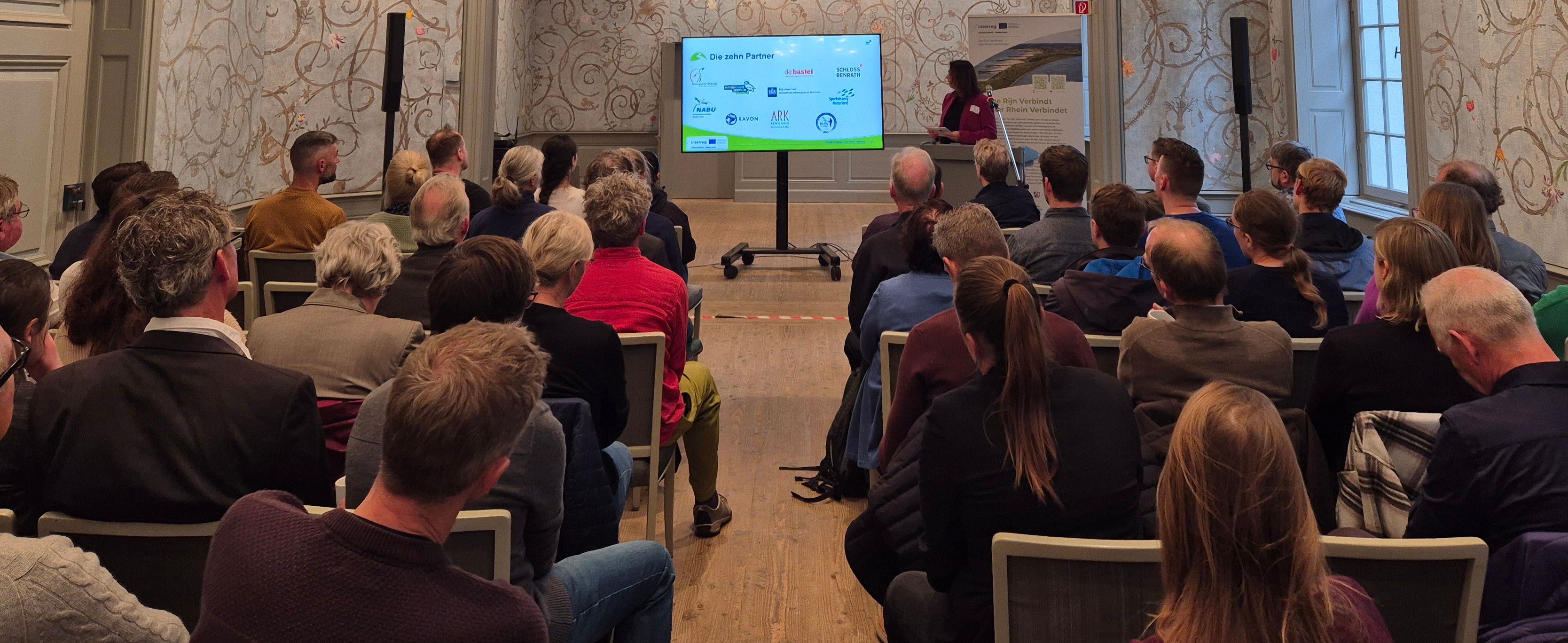The programme offered a varied mix of field excursions, presentations and workshops. Accompanied by Stefanie Egeling from the Haus Bürgel Biological Station, the participants explored the Urdenbacher Kämpe: one of the last undiked floodplains on the Rhine, which floods regularly. This dynamic ensures exceptional biodiversity, with numerous special plant and animal species.
Back at Schloss Benrath, Gunnar Gad and Stefan Schweizer explained the historical relationship between the palace and the Rhine. The palace has an ingenious Baroque water system, in which ponds, canals and streams gradually drain rainwater towards the Rhine—with an eye for both aesthetics and flood protection.
After a joint discussion of the current state of affairs and the short-term milestones of the project, the participants split up for various workshops. In the workshop on plastic pollution in the Rhine, data on quantity, composition, distribution and locations were discussed. Subsequently, an effective approach to reducing plastic pollution was explored jointly.
In the workshop on River Wood Expansion, Rijkswaterstaat shared its experiences with placing river wood in the tributaries of the Rhine. A lively discussion ensued between Dutch and German participants about the conditions under which river wood can or cannot be placed. Developments in new microbiotopes were already visible in the first placements.At the end of the meeting, two exhibitions were officially opened: the exhibition on migratory fish and otters in Schloss Benrath, and the online visitor centre where visitors can explore the Rhine and related projects for themselves.
The “Rhein Verbindet” project is being carried out as part of the Interreg VI programme Deutschland-Nederland and is co-financed by the European Union, MWIKE NRW and the Provincie Gelderland with €2,557,488.72.

